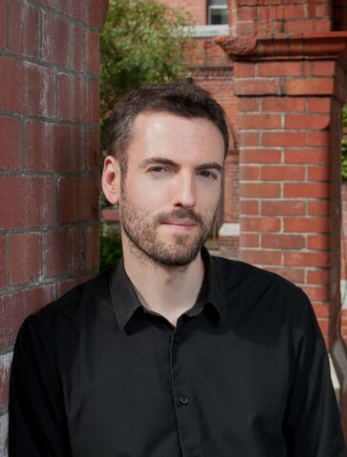
Kevin Power is a novelist and critic. He graduated from University College Dublin with a BA in 2002, an MA in 2003, and a PhD in American Literature in 2013. His first novel, Bad Day in Blackrock, was published in 2008 and was filmed as What Richard Did (2012), directed by Lenny Abrahamson. In 2021 his second novel, White City, was published, and was shortlisted for the Eason Irish Novel of the Year, the Dalkey Book Festival Novel of the Year, and the Kerry Group Irish Novel of the Year awards. In 2022 he published a collection of criticism, The Written World: Essays and Reviews. He is currently holding a position as an assistant professor at the Trinity Oscar Wilde Centre in Dublin.
Asked to write about New Currents in Irish Literature, I am put in mind of the David Foster Wallace story about water. Two fish are swimming along. An older fish passes by. “Morning, boys,” says the older fish. “How’s the water?” The two younger fish swim on. One says to the other, “What’s water?” In other words: it’s hard to see the element you live in. Nonetheless, a brief synoptic view might just be possible.
Best to start, perhaps, with Modernism and its legacies. It is the ambiguous fate of the contemporary Irish writer to find herself working in a literary tradition shaped in part by Oscar Wilde, James Joyce, W.B. Yeats, and Samuel Beckett – whose names, listed in that order, constitute a capsule history of Modernism as such (from 1890s Aestheticism to 1950s Absurdism).
A strong current of 21st century Irish writing bravely picks up the baton of Modernism, and follows the urge to Make It (language, literature, consciousness) New. Perhaps the defining novel of 21st century Ireland, Mike McCormack’s Solar Bones (2016), takes the form of a single sentence, spoken from beyond the grave by Marcus Conway, a civil engineer from Louisburgh, Co. Mayo, whose beloved wife, Mairead, becomes a victim of the 2007 cryptosporidiosis outbreak in Galway city and environs. It is a novel about the built world, about the infrastructures among which we make our ordinary lives, and a novel about consciousness itself; it sustains Modernism as a living project, rather than as something that ended with the final yes of Ulysses.
Eimear McBride’s A Girl is a Half-Formed Thing (2013) and The Lesser Bohemians (2016) are also unashamedly Modernist – McBride, in interviews, has cited her first encounter with Ulysses as a shaping moment in her writing life. Her two major novels brutally disarrange language itself as a means of representing trauma and articulating the difficulties of fashioning a self. Significantly, both McBride and McCormack spent years in the literary wilderness; McCormack’s early fiction was praised, but Solar Bones was his late breakthrough to a wider public consciousness, and McBride spent nine years seeking a publisher for A Girl is a Half-Formed Thing (it was eventually brought out by Galley Beggar, an adventurous small press based in Norwich).
Solar Bones, by contrast, was initially released by Tramp Press, a small Irish publisher that has consistently recognised, and published, important works outside mainstream traditions. Tramp’s founders, Lisa Coen and Sarah Davis-Goff, were already veterans of Ireland’s small-press and literary-journal scene when they began; their work, and Tramp’s success, leads us fairly naturally to this key element of current Irish literary life.
Back in 1997, when Declan Meade began to publish The Stinging Fly, the Irish literary-journal scene was a sparse affair, and for a number of years, the Fly was effectively the only game in town for young writers seeking to publish their first short stories. Meade’s great gifts as an editor and publisher have meant that, in the quarter-century since its inception, the Fly has become an Irish institution, and an incubator for significant (indeed, occasionally world-class) talent. Two contemporary masters of the short story, Kevin Barry and Colin Barrett, are representative, here; both have gone on to worldwide recognition following debut collections published by Stinging Fly Press, as have Claire-Louise Bennett and Nicole Flattery. Astute agents and publishers in London and New York read The Stinging Fly closely.
Myriad other Irish literary journals rose up to follow the Fly, north and south of the border. The Tangerine, Banshee, The Moth, The Pig’s Back, Tolka – this is just a handful; this is a rich, exciting, highly varied scene, and within it, more often than not, the legacies of Irish Modernism are sustained and refreshed. There is also the venerable Dublin Review, launched in 2000 and edited by the excellent Brendan Barrington, which has overseen an Irish renaissance in the personal essay. It was The Dublin Review that first published Sally Rooney – and here we leave the precincts of Modernism and enter into that bright commercial playground, the mainstream.
Rooney’s enormous success did not occur in a vacuum – mainstream Irish fiction had been enjoying a commercial boom since around 2012 or so, meaning that the soil in which Rooney’s talent could grow was well-nourished; what’s interesting, and significant, about Rooney’s work is its equivocal relationship with Irishness. I don’t mean this as a criticism; nothing could be more Irish than an equivocal relationship with Irishness. Let Rooney stand for several generations of Irish writers who have sought to engage with the legacies of Irish modernism by going abroad for their inspiration – in the case of Rooney and her peers, one source has clearly been American minimalists like Ann Beattie and Mary Gaitskill, just as, for the key writer of a previous generation, John Banville, it was Vladimir Nabokov and Thomas Mann who mattered most. Ireland – a small Anglophone country – is by nature highly permeable to outside influence, in literature as in everything else; in the complex refractions of influence and history, Irish literature continues to form itself in new and fascinating ways.